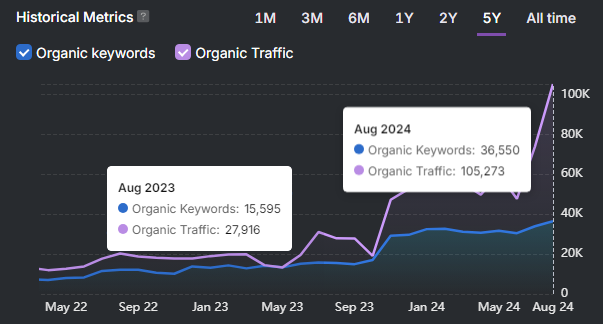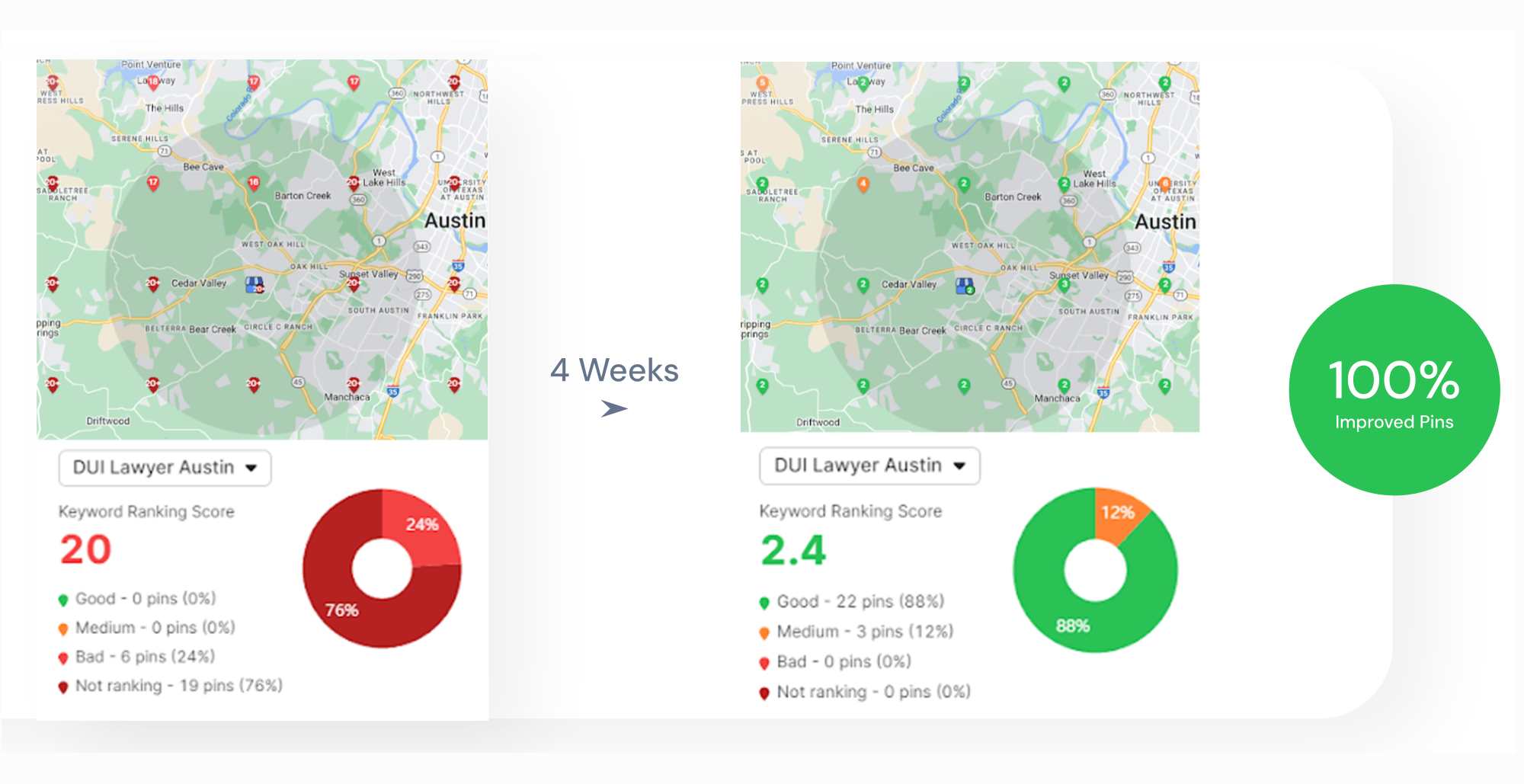Topic clusters, known as content clusters, refer to groups of interlinked pages centered around pillar pages. The pillar page provides a broad overview, while cluster pages explore related subtopics. Internal links connect these pages and improve navigation for both users and search engines.
Topic clusters work like a well-organized library. A central “pillar page” acts as the main book on a subject while supporting pages dive into related subtopics, all interlinked for easy navigation. This strategy helps both users and search engines find, understand, and trust your content. Without content clusters, websites often become a chaotic mix of unrelated content, which makes it harder for visitors (and Google) to see your expertise.
In this article, we show you how to create topic clusters and introduce an even more powerful strategy called topical maps.
What Are Topic Clusters?
Topic or content clusters refer to groups of interlinked, thematically related pages centered around a pillar page. The pillar page provides a broad overview of the main topic, while cluster pages explore related subtopics.
Content clusters are an SEO strategy that aims to organize content around a single topic to improve topic coverage, navigation, authority, and user experience. SEO professionals call this strategy by other names, too. They include content hubs, hub-and-spoke models, or pillar-and-cluster techniques.
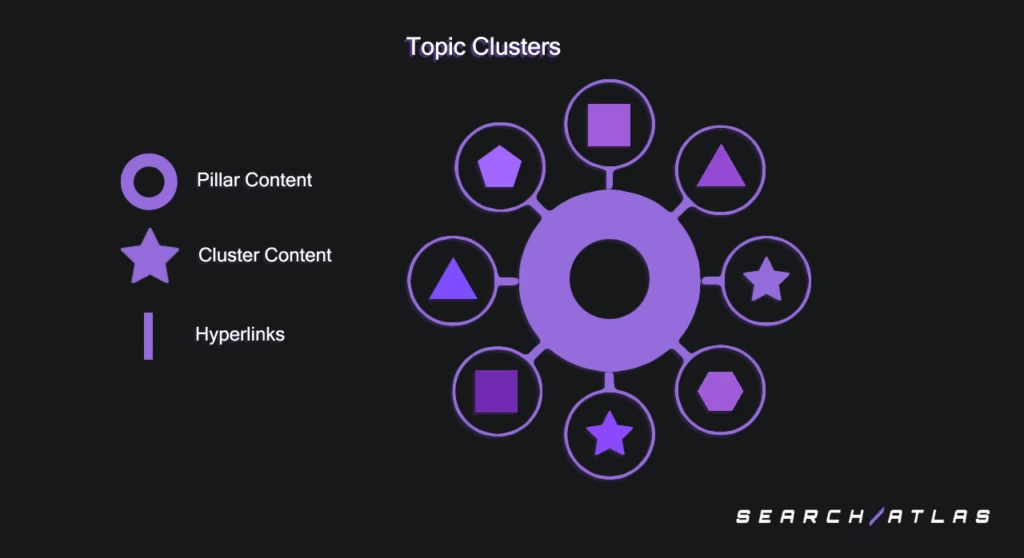
Why Are Topic Clusters Important for SEO?
Topic clusters make it easier for users and search engines to navigate the website.
A topic cluster organizes content around a central pillar page and covers a subject in depth. This signals to search engines that your site is a credible, authoritative source on the topic.
Why does this matter? Search engines prioritize well-structured, authoritative content when ranking pages. The more high-quality, interlinked content you create on a topic, the better your chances of ranking for multiple related keywords. Ranking for multiple related words brings more traffic to your site.
By implementing topic clusters, you get the benefits listed below.
- Clearer Site Structure. Helps users and search engines find related content easily.
- Higher Topical Authority. Demonstrates expertise by covering a subject comprehensively.
- Improved SEO Performance. Increases keyword rankings and organic traffic.
- Stronger internal linking. Connects related pages naturally, which improves navigation.
- Better SEO User Experience (UX). Guides visitors through content logically, which keeps them engaged.

What Are the Key Components of Topic Clusters?
To build a strong topic cluster, you need 3 elements (pillar page, cluster pages, internal links). We explain more about each below.
Pillar Page
A pillar page is a webpage that covers a topic completely and serves as the main hub for a topic cluster. The pillar page provides extensive overviews of core topics and links to related cluster pages because it establishes topical authority. Pillar pages serve as central resources that search engines recognize as authoritative when you want to rank for competitive keywords. These pages are typically longer and address multiple subtopics within a main theme.
Cluster Pages
Cluster pages are individual webpages focused on specific subtopics within a broader theme and connect to the main pillar page through internal links. Cluster pages dive deep into narrow aspects of the central topic because they target long-tail keywords and specific keyword intent. Cluster pages link to each other and back to the pillar page to create a cohesive content network. These focused articles typically address single subtopics in detail.
Internal Links
Internal links bind topic clusters together and distribute authority throughout the content network. The links flow from cluster pages back to the pillar page because they signal topical relevance to search engines. Internal links connect related cluster pages to each other when you want to create comprehensive user pathways. These connections help search engines understand content relationships and crawl the entire cluster. The links pass authority from high-performing pages to newer content.
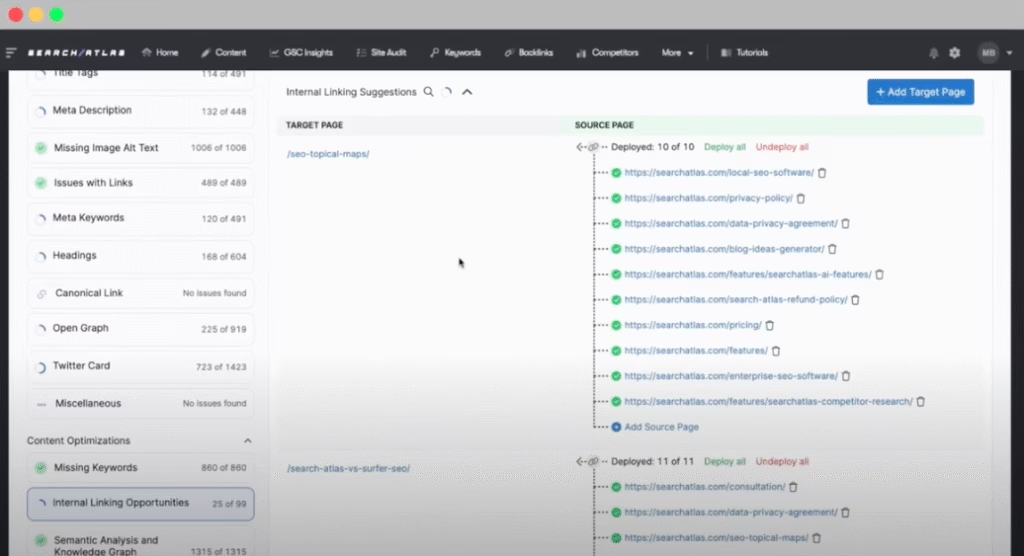
Examples of Topic Clusters
There are countless ways to create topic clusters, based on your industry, content plan, and content organization. Common ways to organize content clusters with examples for each are explained below.
Location-Based Clusters
Location-based clusters organize content around geographic areas and target local search intent. The pillar page covers broad location topics while cluster pages focus on specific neighborhoods, landmarks, or regional services because they capture location-specific searches. This strategy works particularly well for local businesses that serve multiple areas or want to dominate regional search results across their entire service territory.
Example cluster pages for the pillar page “Denver Real Estate Guide” are listed below.
- “Capitol Hill Home”
- “LoDo Condos”
- “Highlands Neighborhoods”
- “Cherry Creek Properties”
Service-Based Clusters
These clusters structure content around core business offerings and related services. The pillar page explains the main service category while cluster pages dive into specific service variations, processes, or specializations when you want to dominate service-related keywords. This approach helps businesses establish authority across their entire service range and capture searches at different stages of the customer journey.
Example cluster pages for the pillar page “Complete Dental Care Services” are listed below.
- “Teeth Cleaning”
- “Root Canal Treatment”
- “Dental Implants”
- “Orthodontic Braces”
Problem-Solution Clusters
Problem-solution clusters address customer pain points and provide comprehensive solutions. The pillar page outlines common industry problems while cluster pages tackle specific issues, symptoms, or resolution methods. This structure attracts users actively seeking solutions and positions your business as the expert resource for addressing their challenges.
Example cluster pages for the pillar page “Small Business Cash Flow Problems” are listed below.
- “Late Payment Solutions”
- “Seasonal Revenue Issues”
- “Emergency Funding Options”
- “Invoice Management Systems”
Product-Based Clusters
These clusters organize content around specific products or product categories and target purchase-intent searches. The pillar page covers the main product line while cluster pages focus on individual products, features, or comparisons when you want to capture product-related keywords.
Example cluster pages for the pillar page”Running Shoes Guide” are listed below.
- “Trail Running Shoes”
- “Marathon Shoes”
- “Beginner Running Shoes”
- “Running Shoe Sizing”
9 Critical Steps for a Winning Topic Cluster Strategy
There are many ways to create topic clusters, but we’re going to focus on the 9 most effective steps.
1. Identify Core Topics to Build Strong Pillar Content
To build strong pillar content, first identify the core topics that anchor your clusters. Core topics are broad, relevant themes that resonate with your target audience and industry. Core topics are easily divided into several smaller subtopics. To figure out which core topics to focus on, think about how your content aligns with your business and marketing goals. Consider what your audience is interested in and needs.
Use the content planner to find the core topics, their search volume, and the difficulty to rank. The Content Planner Tool automatically finds and sorts related keywords for each subtopic.
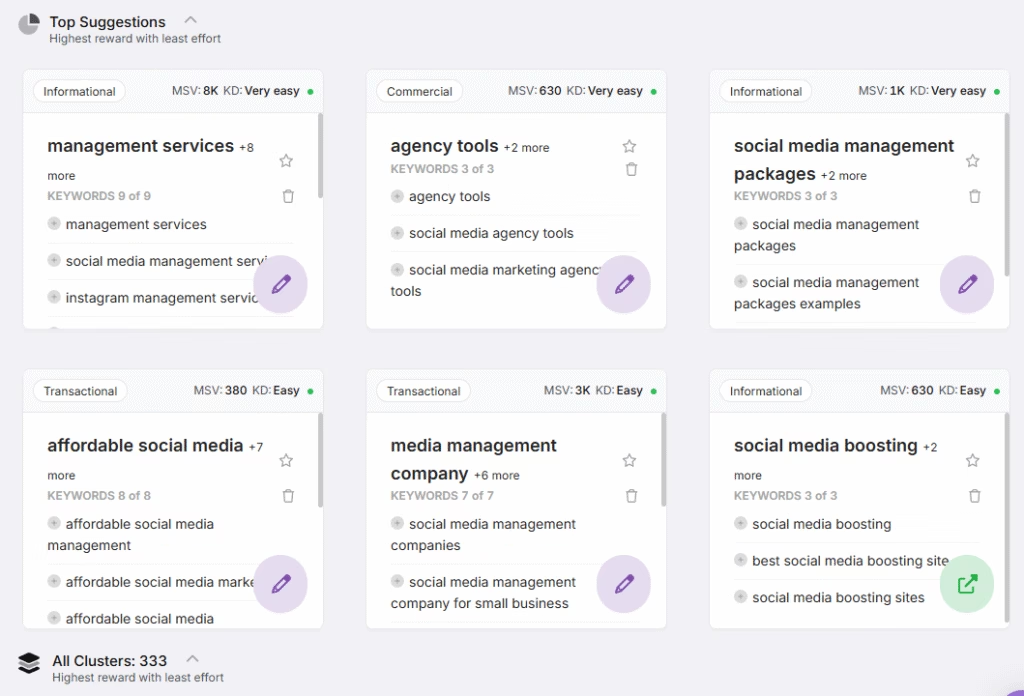
Nail down your core topics, then flesh out each cluster by brainstorming subtopics and related keywords. This approach ensures your content is thorough and speaks directly to your audience’s needs. It helps you attract organic traffic and establish authority in your niche.
2. Research Keywords to Build Effective Content Groups
The next step is keyword research to find relevant search queries for each cluster’s content. Use keyword research tools to discover related keywords and their search volumes. Ways to prioritize your keywords are listed below.
- Semantic Relevance. Choose keywords that are closely related to the main topic. This helps search engines understand the depth of your content and improves rankings.
- Search Volume. Focus on keywords with a good search volume. This ensures you target terms people are actively searching for.
- Keyword Difficulty. Consider how hard it is to rank for a keyword based on your site authority and backlink strength. Start with keywords you have a realistic chance of ranking for.
A keyword research tool helps you quickly identify search volume and keyword difficulty and potential traffic, related keywords, historical search volume, cost-per-click (CPC) for PPC strategies, and more.
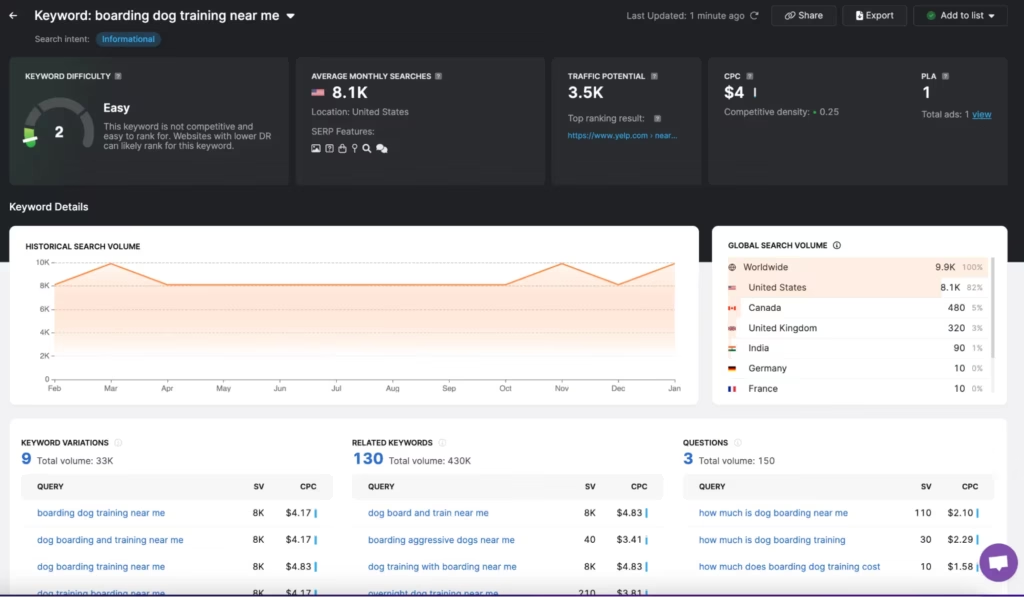
The Keyword Magic Tool Helps you find keywords related to your focus keyword.
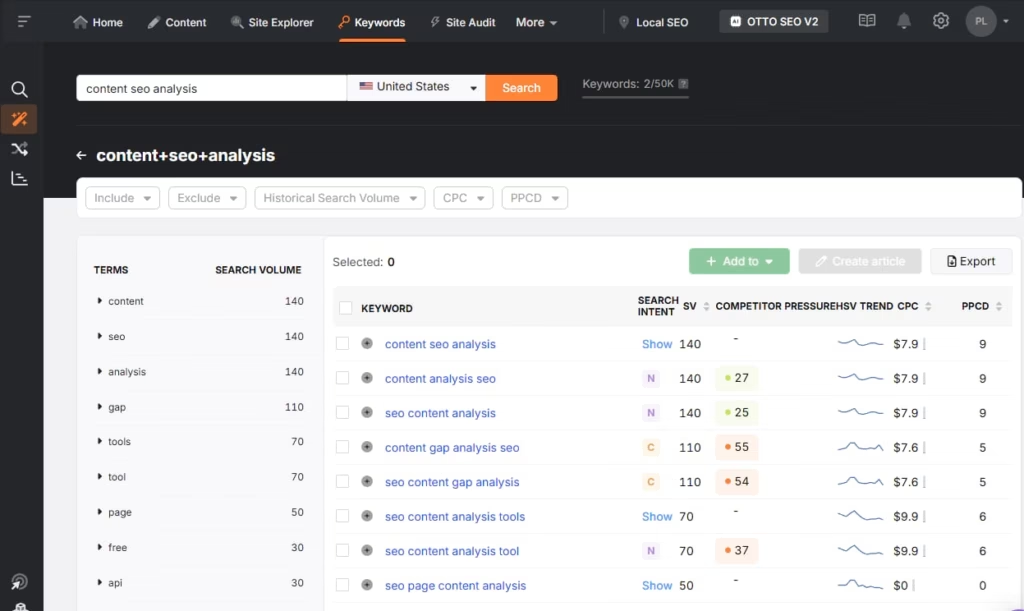
3. Review Existing Content to Enhance the Topic Cluster Strategy
Start by looking at your existing content and see how it fits with your core topics. Does your current content cover the subtopics you want to target? Update or expand it if necessary.
Update existing content and link it to your pillar page. Spot keyword gaps where you covered topics thoroughly but missed longer phrases. 🕵️
Link existing content to new pillar pages and subtopic clusters to build page connections and improve SEO. Refresh outdated or underperforming content by adding relevant keywords and updating information to prevent content decay.
Do this more easily by using OTTO SEO, the first AI SEO agent on the market. OTTO SEO automatically analyzes your content and optimizes it for missing keywords. It performs semantic analysis and updates the content for factual enhancement.
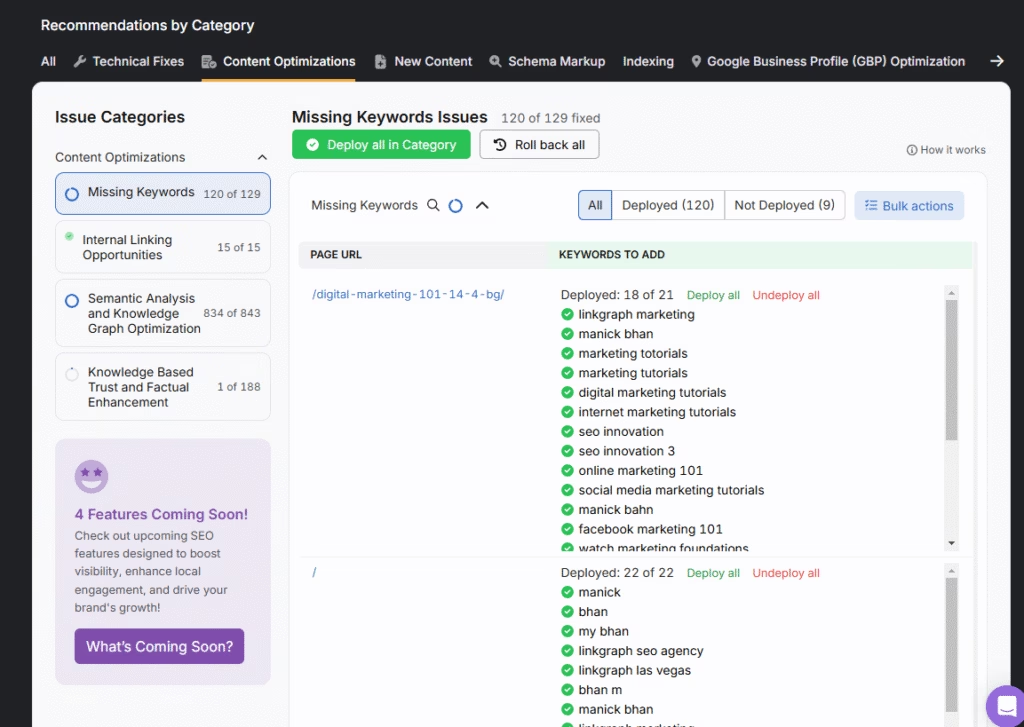
4. Create the Pillar Page to Establish Authority
Now that you’ve researched your keywords, reviewed your existing content, and created a solid plan, it’s time to start building.
Start with the “pillar” page, which acts as the central hub for all your content. Use SEO content tools to create excellent pillar posts. Pillar posts are typically longer than the average blog article, usually at least 2,000 words. A pillar post provides in-depth, comprehensive coverage of your main topic.
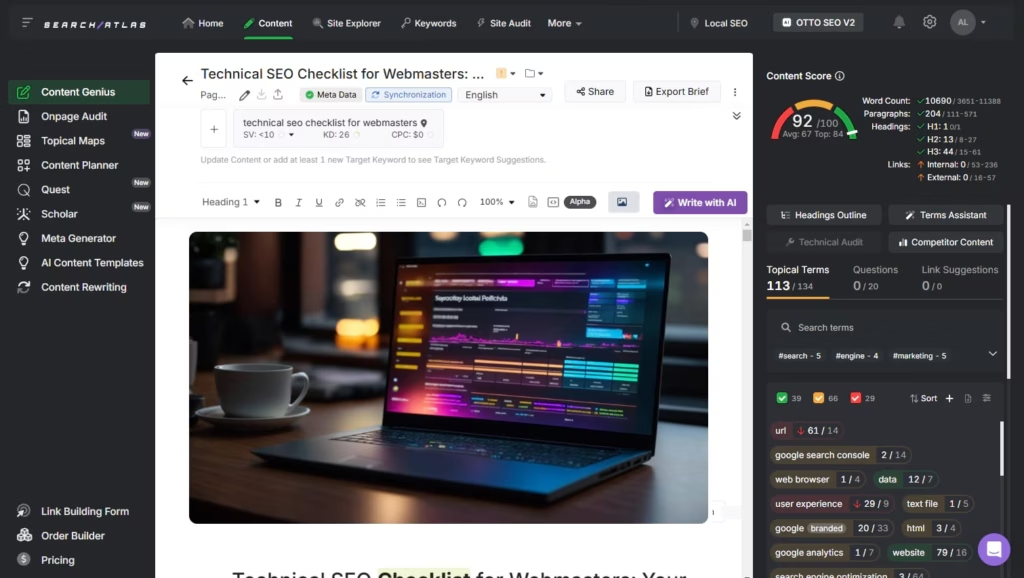
5. Develop Cluster Content to Support Pillar Themes
Create your cluster content, which connects all the pieces of your SEO strategy. Answer the “Who, What, Where, When, and Why” of your pillar page through individual blog posts within the cluster. Increase the relevance and authority of your pillar page by thoroughly covering each angle. Ensure every piece in your content cluster adds value and is tightly related to your main topic to make the whole cluster more effective for both users and search engines.
6. Create Internal Links to Boost SEO Performance
Internal links are links that connect different pages on the same website. Internal links are crucial for three main reasons. The reasons are listed below.
- Navigation. Internal links help users move around your site, which makes your website more user-friendly.
- Website Structure. Internal links help organize your content. They create a clear structure and guide both users and search engines through your site.
- Link Equity. Internal links help spread “link power” throughout your site, which improves your overall SEO.
Search engines rely on these internal links to discover and index the pages on your site. Interlinking gets more complicated the more published content you have. Use clear, descriptive anchor text that reflects the content you’re linking to. Use OTTO SEO to automatically find linking opportunities and deploy the changes with one click.
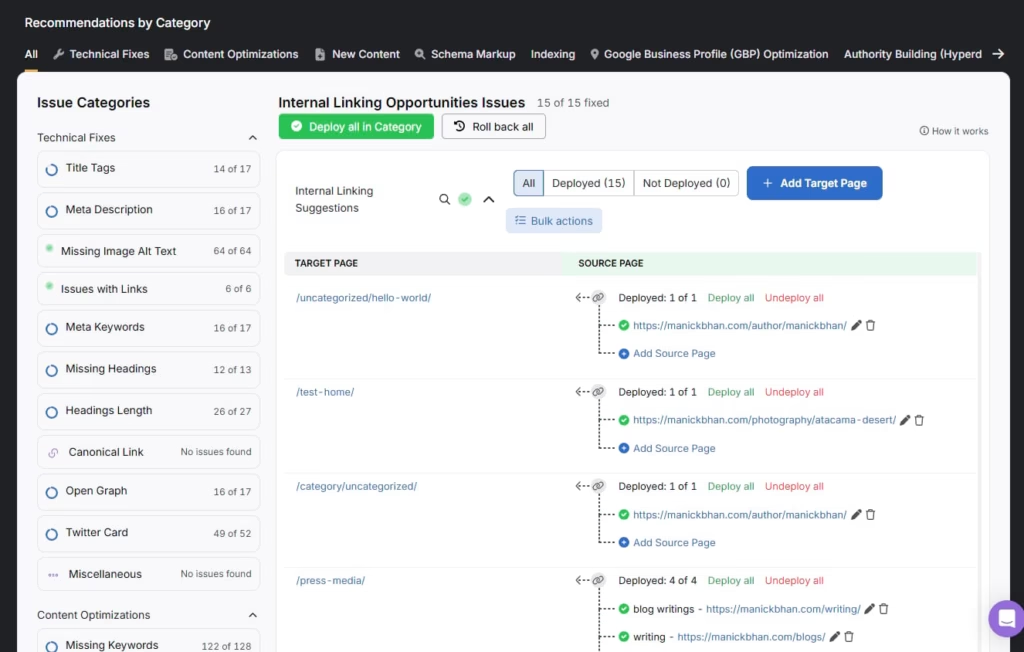
7. Assess Content Quality to Improve UX
Content quality directly impacts SEO performance, revenue, user experience, engagement, and more. To assess it, use dedicated tools like Scholar. Scholar views your content the same way Google does. Scholar gives you information on content freshness, entity use, readability, contextual flow, and other quality metrics. It compares your content to competitor content.
Scholar is directly tied to the Content Genius tool that you use to improve, rephrase, and optimize content. Improving content helps you increase dwell time (time on page). The importance of dwell time is one of the best-kept SEO secrets. Dwell time is a sign of good user experience, and it’s a ranking factor.
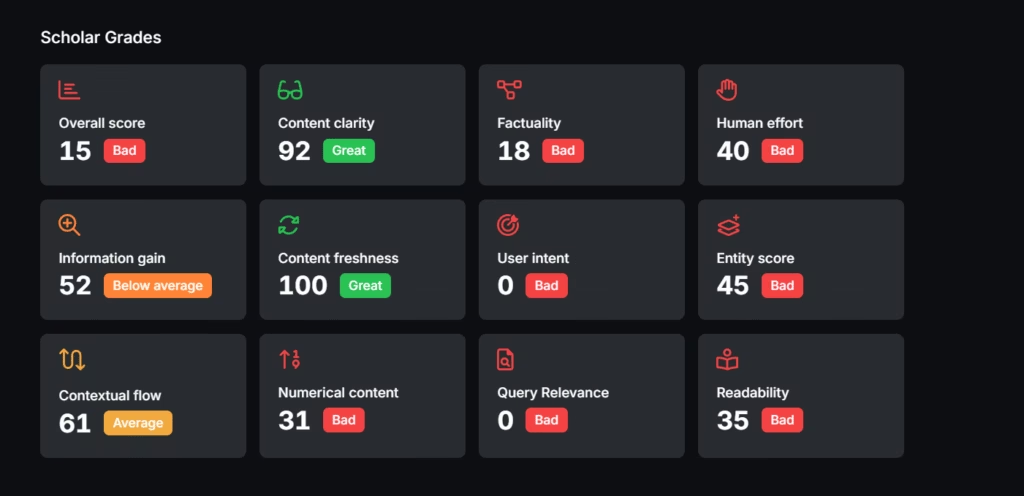
8. Analyze Your Topical Authority to Find Gaps
Topical authority is the perceived expertise and trustworthiness of a website within a niche or topic. Topical dominance is a metric that captures topical authority, as it shows how comprehensively and expertly a website covers a specific subject area. Sites that improve their topical authority often outperform even competitors with a higher Domain Authority (DA).
Search Atlas has a unique Topical Dominance Tool. The Topical Dominance Tool analyzes websites side-by-side for coverage of a topic. The tool reveals keywords competitors use and rank for while covering the selected topic.
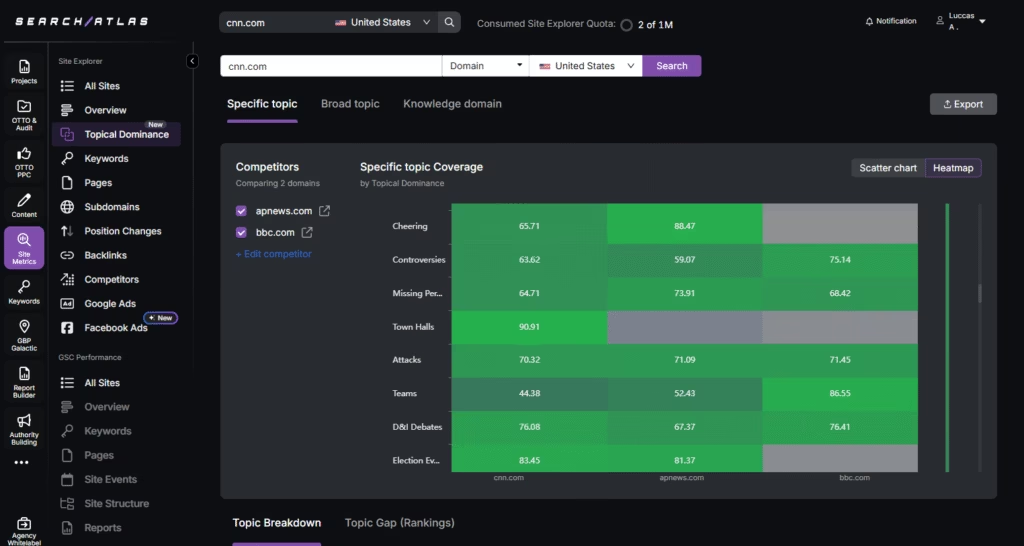
9. Monitor Results to Adapt Your Strategy
Content cluster performance requires tracking organic traffic, keyword rankings, and user engagement. Specialized SEO tools like the Report Builder Tool show content performance and enable optimization of the complete content cluster. This SEO reporting tool tracks performance across Google Search Console (GSC), Google Analytics (GA4), and the Search Atlas Keyword Rank Tracker. You schedule reports to be sent automatically on a weekly, monthly, or quarterly basis to your stakeholders.
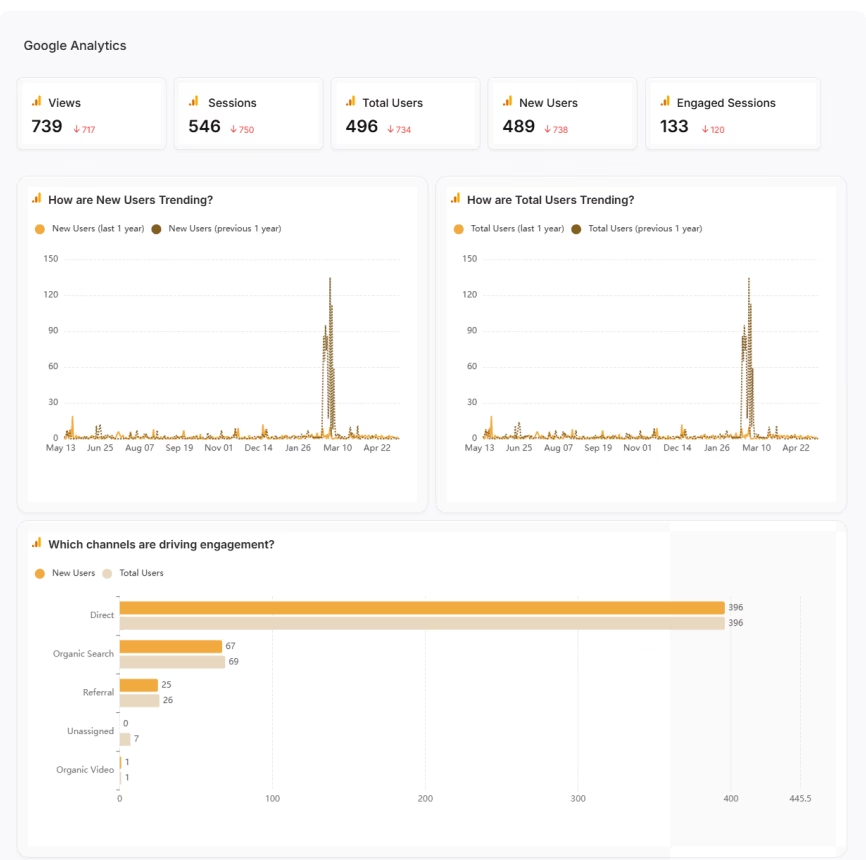
Why Aren’t Content Clusters As Powerful As Other Strategies?
Content clusters aren’t as powerful as other strategies because they are not enough on their own. They need high-quality content, well-researched keywords, and effective internal linking to truly make an impact on search rankings and user experience. Simply creating clusters does not give you the results you’re hoping for. There’s an even more powerful approach called topical maps. 🗺️
What Are Topical Maps?
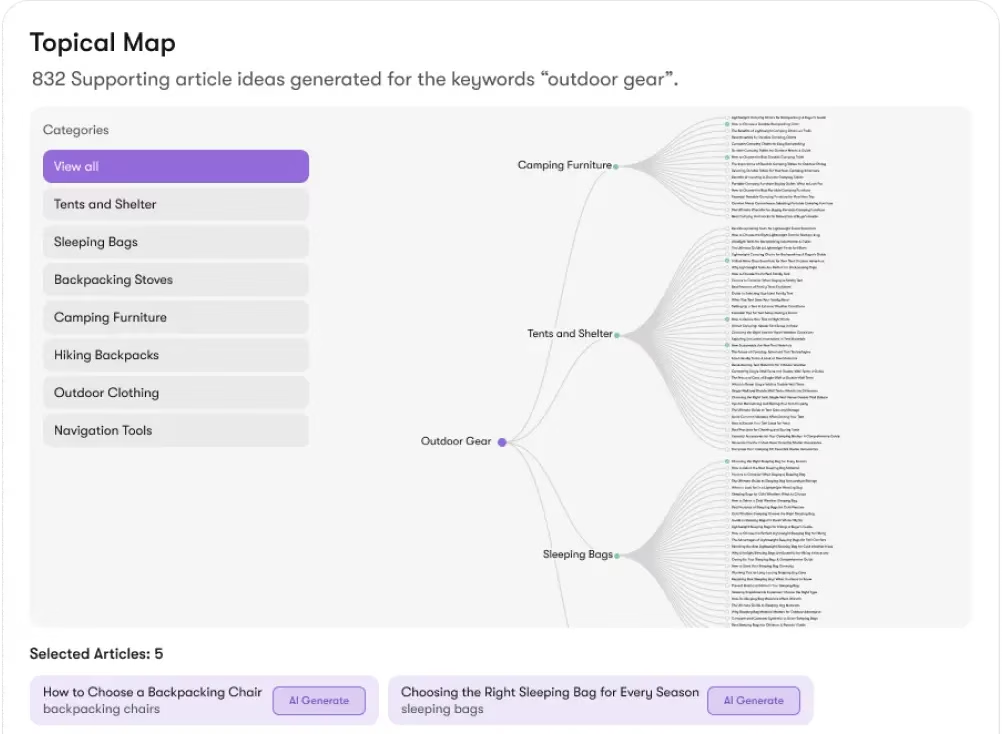
Topical maps are a detailed content strategy that organizes all relevant topics, subtopics, and related queries in a way that fully aligns with user intent.
How Are Topical Maps Better Than Topic Clusters?
Topical maps are a more advanced SEO strategy than topic clusters. While topic clusters group content around broad themes, topical maps create a detailed, interconnected roadmap of topics and subtopics fully aligned with user intent. For example, a fitness blog using a topical map doesn’t just cover “weight loss” but includes topics like “nutrition,” “motivation,” and “fitness plans.” A blog that uses a topical map approach becomes a complete resource for users.
It is possible to skip all of the topic clusters’ steps and create a full topical map strategy with a Topical Maps tool. The tool automatically does the research for you, finds the keywords and search intent, creates the main pages and subpages, does the internal linking, and more.
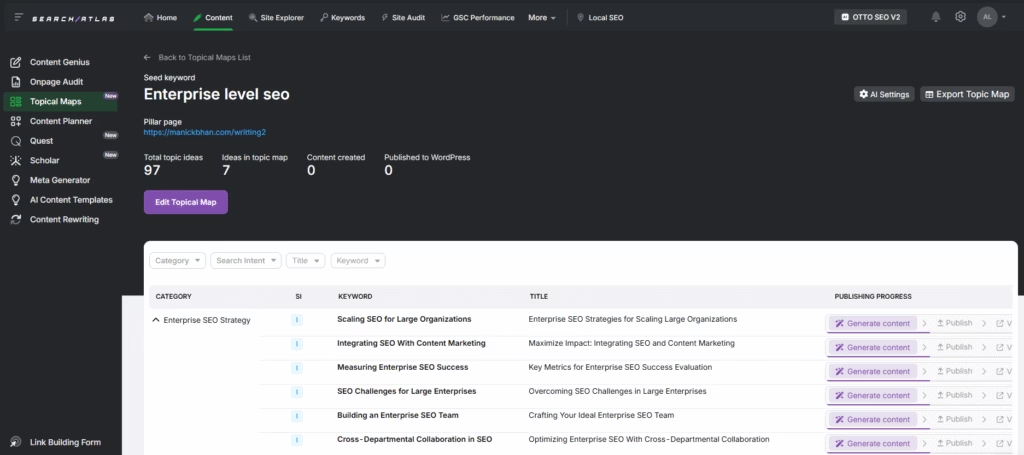
Say Goodbye to Old-School SEO: The Future of SEO Is in Your Map
Relying solely on old-school keyword strategies just doesn’t cut it like it used to. That’s why topic clusters became the go-to solution, offering a more organized and strategic way to structure content. But topical maps take things to a whole new level, as they make your SEO strategy smarter, more effective, and more comprehensive than ever before. 💫
Search Atlas has everything you need to succeed, whether you stick with the classic keyword approach, use topic clusters, or go all-in with topical maps.
OTTO SEO automates most tasks, like technical SEO, on-page optimizations, link building, content creation, and even creating your own topical maps. Search Atlas is here to help with whatever strategy you choose. Start your free trial today. No commitment, cancel anytime!









